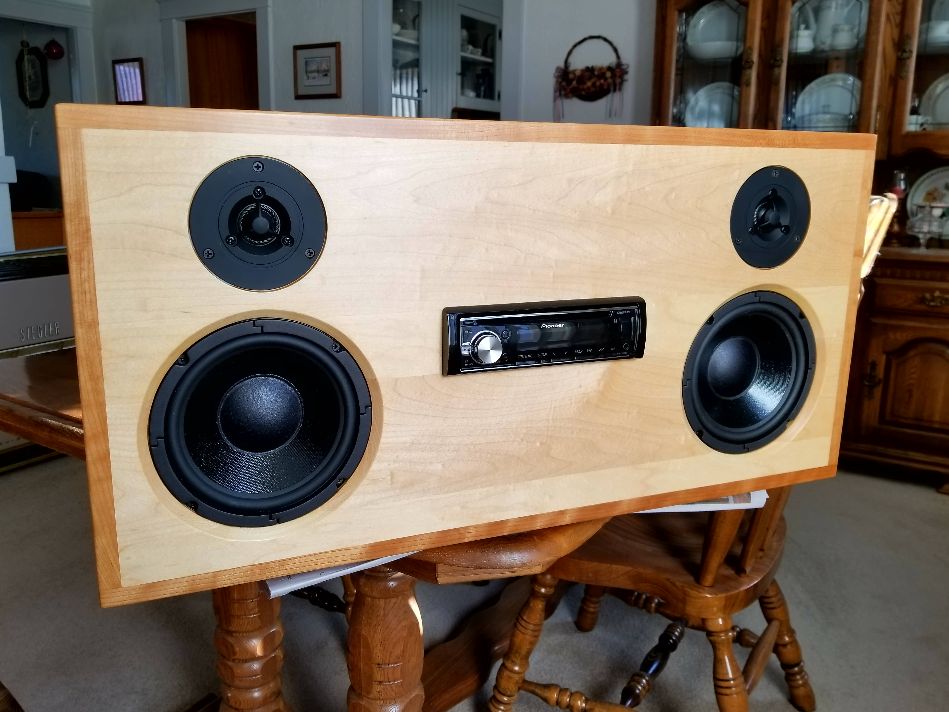
High End Boombox
Designer:
MT Woodworking
Project Category:
Freestyle Speakers
Project Level:
Beginner
Project Time:
8-20 Hours
Project Cost:
$100 – $500
Project Description:
The exterior (top and sides) is made of American cherry and the baffle board is made of maple. All construction was done with cabinet wood screws. A router was used to chamfer the speaker hole and tweeter cut outs. Additional features include Bluetooth and a USB outlet.
Design Goals:
The idea for this project was to create a better sounding boombox for a workshop rather than purchase a cheap plastic constructed one that would not produce quality sound. I wanted to be able to hear music over machinery.
Driver Selection:
Quantity: 2 Item: 292-554
Quantity: 2 Item: 027-340
Quantity: 2 Item: 295-309
Enclosure Design:
A sealed boxed speaker
Enclosure Assembly:
The unit consists of 2 Dayton Audio DC160-4 6 1/2″ mid bass and 2 Visaton DT94-4 polycarbonate tweeters. This is powered by a Pioneer car stereo and that is powered by a radio Shack 13 volt power supply.
Crossover Design:
This is a two-way design with a simple a 10 uF 100V non-polarized capacitors.
Conclusion:
The final product is a high quality sounding boombox with an appearance that fits in nicely in a carpentry workshop.
About the Designer:
Hobbyist interested in various woodworking projects. This is my first audio project and I plan to do more. My next project will consist of higher quality speakers with more woodworking details.
Project Parts List:
|
Part # |
Description |
Qty |
|
292-554 |
Visaton DT94-4 0.8″ Polycarbonate Dome Tweeter 4 Ohm |
2 |
|
027-340 |
10uF 100V Electrolytic Non-Polarized Crossover Capacitor |
2 |
|
295-309 |
Dayton Audio DC160-4 6-1/2″ Classic Woofer Speaker |
2 |

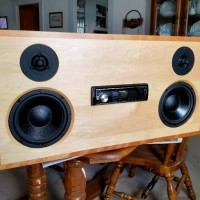
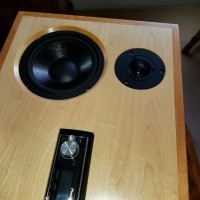
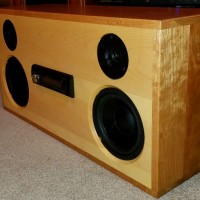

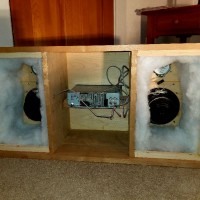
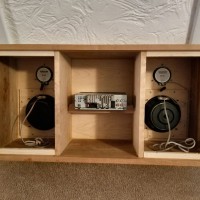
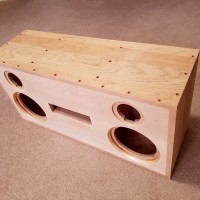
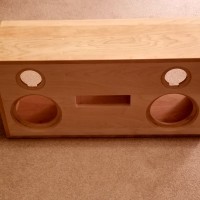
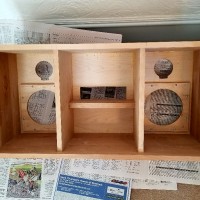
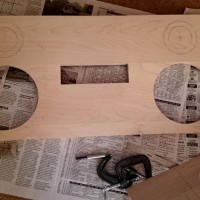
Any info on the power supply ?
I use a radio shack 13.8 vdc 19 amp power supply
We’re you able to get the head unit to keep its memory once the power supply was turned off?
You can only make the memory function and the clock work properly on most car audio systems by leaving minimal power applied. You can supplement your power supply by adding a battery in circuit, and it WILL make the amplifier more stable if done correctly, but you still have to have a more permanent and more stable source of power than any power supply can render.
You’ll get a lot more power and a much cleaner sound if you ditch the RS power supply and build your own.
A small backup battery system such as a bank of AAA batteries or even a 9V, properly isolated with a pair of diodes, can supply low current voltage for the clock and radio memory functions.
The entire unit can also be portable powered with a 12V Sealed Lead-Acid battery or a bank of 18650s which can be easily recharged.
Nice selection of wood! Great job altogether!
One other thing: you should acoustically and dynamically isolate the chamber and mounts for the stereo from the remainder of the cabinet.
what did you use to power the head unit
I would use something other than Pioneer and I would use a far more stable regulated power supply.
The one I built into an existing $20 yard sale cabinet utilized a $15 Chinese head unit and a $17 Chinese class-D amplifier. I got my Pyle woofers on sale for $6 each.
It had a problem with too much vibration in the head unit and failed within two years.
Much unused space in the head unit chamber. If that space can be added to the loudspeaker chambers, bass will prob ably be better. Speaker chambers don’t have to be rectangular, so utilizing the extra space is quite feasible.